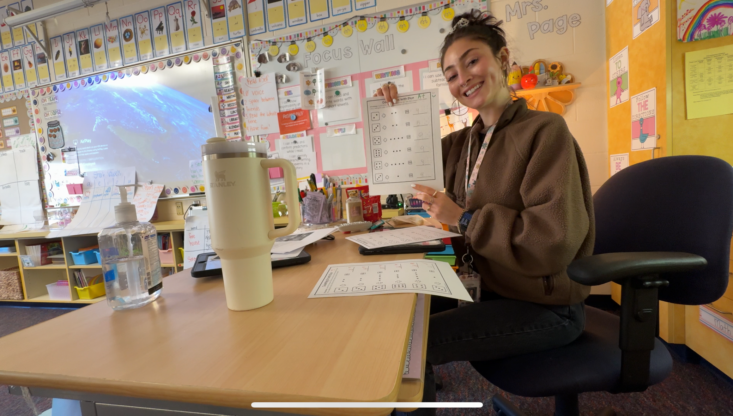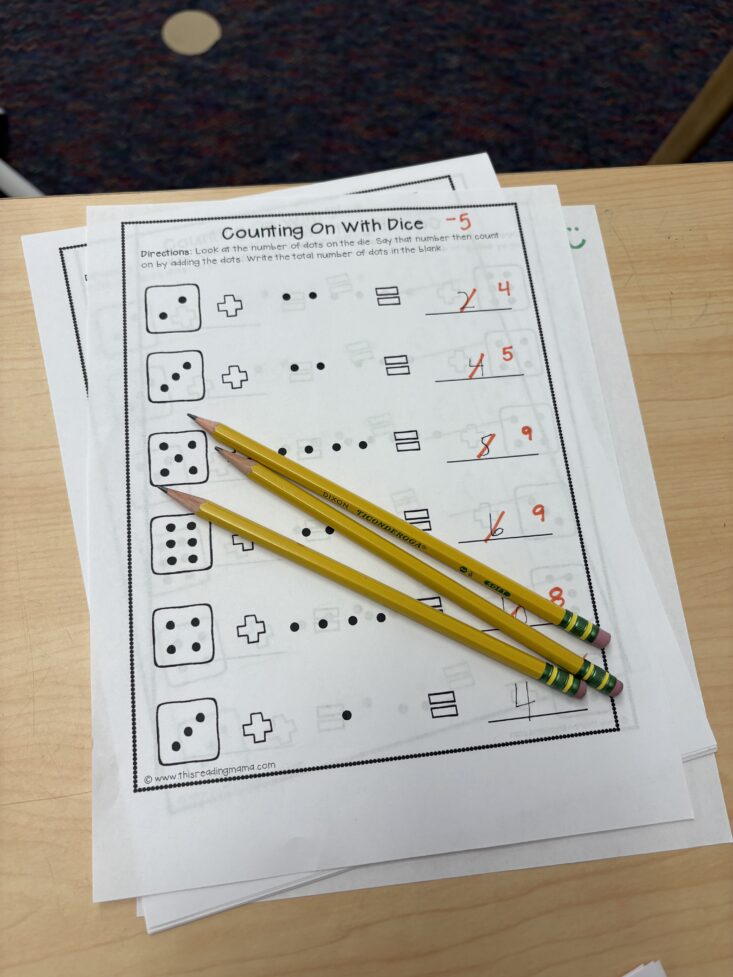
As an elementary school teacher, I’ve seen firsthand that even great classrooms can’t always meet every child exactly where they are. We move as a group, following curriculum standards and pacing guides. Math is especially difficult to learn in a school setting because the concepts build on each other, becoming more difficult over time. If a child falls behind on even one concept, like fractions or multiplication tables, that small gap can continue to grow over time.
On the other hand, some children already understand the lessons and sit quietly completing worksheets, wishing they could be challenged more. They typically become bored or disengaged and lose their natural curiosity about math.
That’s where extra help really makes a difference. A well-structured program can either close these learning gaps before they widen, or push advanced learners forward. Mathnasium is one of the few programs I’ve seen where both struggling and high-achieving students thrive - I’ve even had students tell me, “I actually like math now!”
Why Mathnasium gets my teacher seal of approval
Here’s why I trust Mathnasium with my students and why I’d happily trust it when I have children:
1. Personalized attention and mastery-based pacing
Every student begins with a diagnostic assessment to pinpoint exactly what they do and don’t understand. From there, they receive a customized learning plan built on the Mathnasium Method™, not a stack of generic worksheets.
Your child works on the precise concepts they need, not topics they’ve already mastered or random filler problems
2. Trained teacher who teach for understanding
The instructors at Mathnasium aren’t just homework helpers. They’re trained to teach conceptually using multiple modalities so children internalize why math works, not just how to do it.
That’s a huge difference from rote drilling. In my classroom, I’ve seen students return from Mathnasium more confident and eager to engage. They ask more questions, volunteer answers, and participate in lessons they used to dread.
3. Motivation through fun and rewards
One of the best things about Mathnasium is that it feels fun for kids. Students earn points and prizes and can even be entered into drawings for bigger incentives.
Because learning is gamified, children stay motivated instead of feeling dragged into practice sessions.
4. Not just remediation, but enrichment too
High-achieving students aren’t sidelined here. Mathnasium provides enrichment opportunities that go beyond grade-level expectations. Students can explore deeper mathematical ideas and challenges, helping them stay engaged.
Your child can fill in gaps and stretch into new territory, and all of this happens in one flexible, supportive environment.
What I notice back in my classroom
After a few weeks or months of Mathnasium, I start to see noticeable changes:
- Students who once froze at the sight of a fraction question now tackle it confidently.
- They smile when I say, “Okay, math time.”
- They share their reasoning, help peers, and often surprise me with insights I didn’t expect.
- Test anxiety decreases. That panicked “I’ll never get this” look disappears.
One parent told me, “My daughter now looks forward to her math class.” I’ve heard that same story from many families whose children attend Mathnasium.
Even the strongest students become more inquisitive. They dive into patterns and number theory instead of simply rushing through worksheets.
What does it cost and how do you get started?
Pricing at Mathnasium varies by location, but U.S. families can typically expect rates comparable to private tutoring. The average is around $35 per hour, depending on the region, local cost of living, and the type of program or package selected.
The rate is often customized based on your child’s plan. This includes the number of sessions, weekly frequency, and level of instruction. Some centers also charge a one-time assessment or enrollment fee.
Here’s what getting started looks like:
- Schedule a free or low-cost assessment. You’ll fill out a quick form, and your local center will schedule a diagnostic session to identify strengths and learning gaps.
- Receive a custom learning plan. The center outlines which concepts your child will work on, how often sessions are recommended, and what goals to expect.
- Begin sessions. Your child attends in-center or online sessions, typically in small groups with a low instructor-to-student ratio.
- Ongoing mastery checks. As your child masters concepts, the plan evolves to ensure consistent progress.
Families usually find the sign-up process simple and well-supported by the local Mathnasium team.
A final word from a teacher’s heart
If I could share one piece of advice with every parent, it would be this: getting help early is one of the best gifts you can give your child in math. Fixing small misconceptions now prevents years of frustration later.
Mathnasium stands out to me because it combines rigorous instruction with fun and encouragement. It supports every kind of learner, whether your child needs to catch up or is ready to soar ahead.
I’ve watched it transform my quietest students into confident problem-solvers. I’ve seen children who once dreaded math begin to ask for more practice.
If you’re considering a math support program, I can’t recommend Mathnasium strongly enough.





